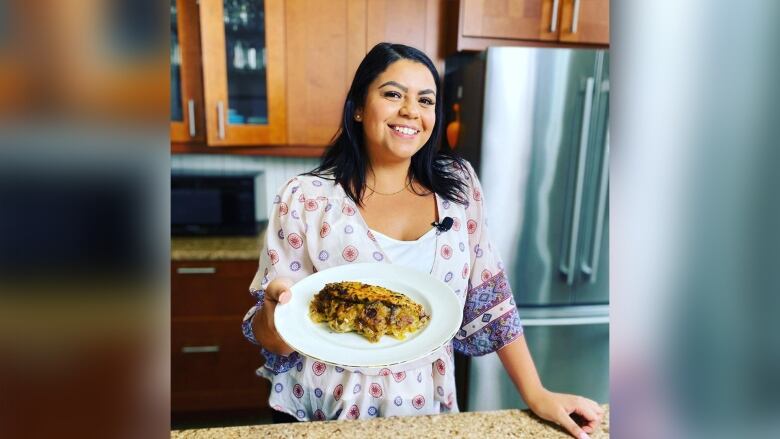Hunting part of a ‘beautiful system’ in Six Nations, Ont., among traditional foods highlighted in new study
Saturday marks the final day of this year’s deer hunt at Short Hills Provincial Park, where people from Six Nations of the Grand River exercise hunting rights cited in the Nanfan Treaty to help maintain the deer population in the Niagara area of Ontario.
The Nanfan Treaty, or Fort Albany Treaty of 1701, gives Six Nations members a right to hunt and fish in Dundas Valley as a section of traditional Haudenosaunee hunting ground. Since 2013, the park has been open for the hunt on six separate days between October and December.
The fruits of the hunt are valuable for several reasons — and an example of the traditional foods that a recent study indicates are the better option for people on First Nations communities.
The key findings of the decade-long First Nations Food, Nutrition and Environment Study (FNFNES), released in October, reveal the adoption of a non-traditional diet has negatively impacted Indigenous nations, and “almost half of all First Nations families have difficulty putting enough food on the table.”
The study was led by researchers with the University of Ottawa, the University of Montreal and the Assembly of First Nations. They found obesity rates among the Indigenous population are double the rate among Canadians, with one-fifth of the Indigenous adult population suffering from diabetes.
Malek Batal, a lead member of the FNFNES steering committee and a professor with the University of Montreal’s department of nutrition, said it is clear that greater access to healthier, traditional food is the most logical way forward. But even after preliminary recommendations were released in recent years, there is still work to be done.
“I think the study was not ignored by First Nations leadership and by members, but I have yet to see tangible examples of federal or provincial programs that address the issues of access to traditional food and the health disparities in a systemic way,” Batal said in an email.
The study also found many Indigenous nations wish to have more traditional food, but barriers exist, including governmental regulations, commercial activities such as mining and farming, and territorial loss.
These foods are proven far superior in nutritional value, Batal said, and can provide Indigenous families food security —aspects well known by hunters of the Six Nations community, including those participating in the Short Hills hunt this season.
Hunting passed between generations
One of those Six Nations hunters is John Monture.
“It’s definitely better meat than what you buy in the store, and I take a lot of pride in that,” said Monture. “I’m 100 per cent on [reclaiming our traditional diet].”
A hunter for 18 years, Monture took it up with his father. He began filming his outings as Monture Outdoors, a YouTube channel, five years ago, and also works as media producer of Buckdown Boys TV, a collective of Indigenous hunters.
Monture said the relationship to food and the land extends into treaty rights.
“A big part of what I say is if we don’t exercise our rights, we’re gonna lose them,” he said, adding that hunting is something passed between generations.
It helps provide his family with meat in the winter, as a single deer can last through many of the colder months. The hunters of Buckdown TV also provide meat for the Longhouses in Six Nations. They lay tobacco down during the hunts, and Monture said he has learned patience, persistence and tenacity through hunting —qualities that are valued in Haudenosaunee culture.
It’s definitely better meat than what you buy in the store and I take a lot of pride in that.– John Monture, Six Nations hunter
Celeste Smith, a member of the Peel Action Food Council (PAFC), which was established to work toward a sustainable food system in Peel Region while reflecting the diversity of its residents, said hunters providing deer meat for ceremony in the Longhouses is “essential.”
“We need that deer for ceremony, we need it for our drums and for everything we are as a people, so that is a cultural right,” she said.
Smith, also the founder and owner of Cultural Seeds, a Manitoulin Island-based Indigenous garden consultation service, facilitated a publicly accessible presentation with the PAFC to provide context to various Haudenosaunee treaties and treaty rights on Nov. 11. She said providing education is one of the main ideals she emphasizes strongly.
“This type of meat is biologically perfect for us, and we, as Indigenous people, should be eating the food that we have always eaten and there are way too many deer in Ontario,” she said.
Smith explained that provincial parks in Canada are considered Crown land, which in turn, makes them Indigenous land held in trust, and they come with hunting rights. She named hunting rights as one of the most important rights Indigenous people have.
“Treaty rights are tied to the land, and the land is tied to us through our culture,” she said. “For Haudenosaunee people, in our stories, we are made from the clay of the earth. Often Western or Eurocentric thinking doesn’t align with that.”
An old tradition gets new life
That alignment was echoed in the teachings that Eddie Thomas, the cultural resource at Ganohkwasra Family Assault Support Services on Six Nations, was provided by his family members.
“Number one thing that I learned is that we don’t waste anything; we use the entire animal,” he said. “It teaches us not to be wasteful.”
In the past, Thomas would hunt with his family members, a role his cousins continue to fulfil. Thomas said teachings have been ingrained along with the spiritual aspects of taking life and providing an offering of tobacco.
He spoke about the Peacemaker, colloquially called Hiawatha, who provided a constitution that redirected the united Haudenosaunee back to a diet that included deer, to highlight the anointing of the animal as a leader amongst four-legged beings.
One thing he hopes all can understand is the Haudenosaunee have hunted game for time immemorial.
“Our way of life has always been this way, and it goes back to being given that animal to survive on this Earth,” he said. “My grandma used to say, ‘You are what you eat.'”
That stance has inspired some chefs on Six Nations to incorporate traditional foods into their meals.

“Incorporating Indigenous foods into our diet is important because it’s better for your overall health, across the board,” said chef Aicha Smith-Belghaba, owner Esha’s Eats. “It’s resilience against colonization in bringing back Indigenous foods into a mainstream, normalized, everyday type of eating as opposed to only eating traditional foods once in a while.”
Through food catering, Smith-Belghaba has swapped potatoes in favour of navy beans and used squash in place of regular stuffing or thickening for soups. Her brother now hunts, though she said many families have been impacted by colonization to the point where they do not hunt at all. She echoed that the nutritional value of the food is incomparable.
“Traditionally speaking, food is medicine.”
She said preparing food was a family practice that brought members closer together, and closer to their food and where it came from. People today do not eat together any longer, nor do they cultivate the food from seed to plate, she said, and she believes hunting is more humane than commercialized food harvesting.
“It’s not just mindless killing. There’s a purpose to it, and you are aware of the life you are taking and giving thanks,” she said. “It’s a beautiful system.”
Indigenous foods are more than just food; it’s a way of life, it’s our history, it’s our culture, it’s a way of fighting for our rights.– Aicha Smith-Belghaba, chef and owner of Esha’s Eats
That system, Smith-Belghaba said, has more influence in the physical, mental, spiritual well-being of Indigenous people than most people realize.
“Indigenous foods are more than just food; it’s a way of life, it’s our history, it’s our culture, it’s a way of fighting for our rights, and some people might see food as an obscure way to do that. But food being taken away from Indigenous peoples was a calculated process. The powers at be couldn’t get rid of us unless they starved us out.
“So food sovereignty is more than just about food. It’s about knowledge keeping, traditions and giving those traditions to the next generations, and to be self-sustaining.”





